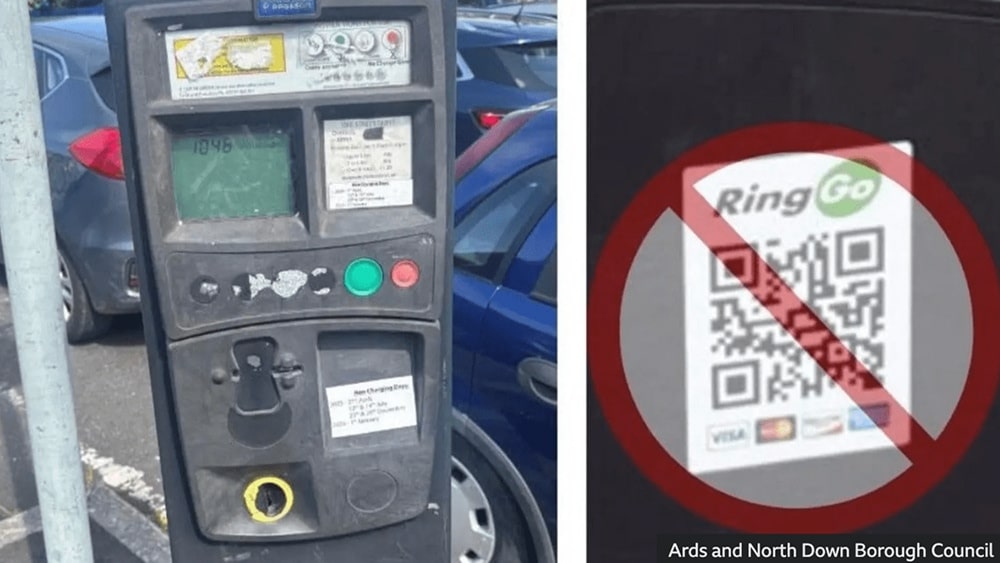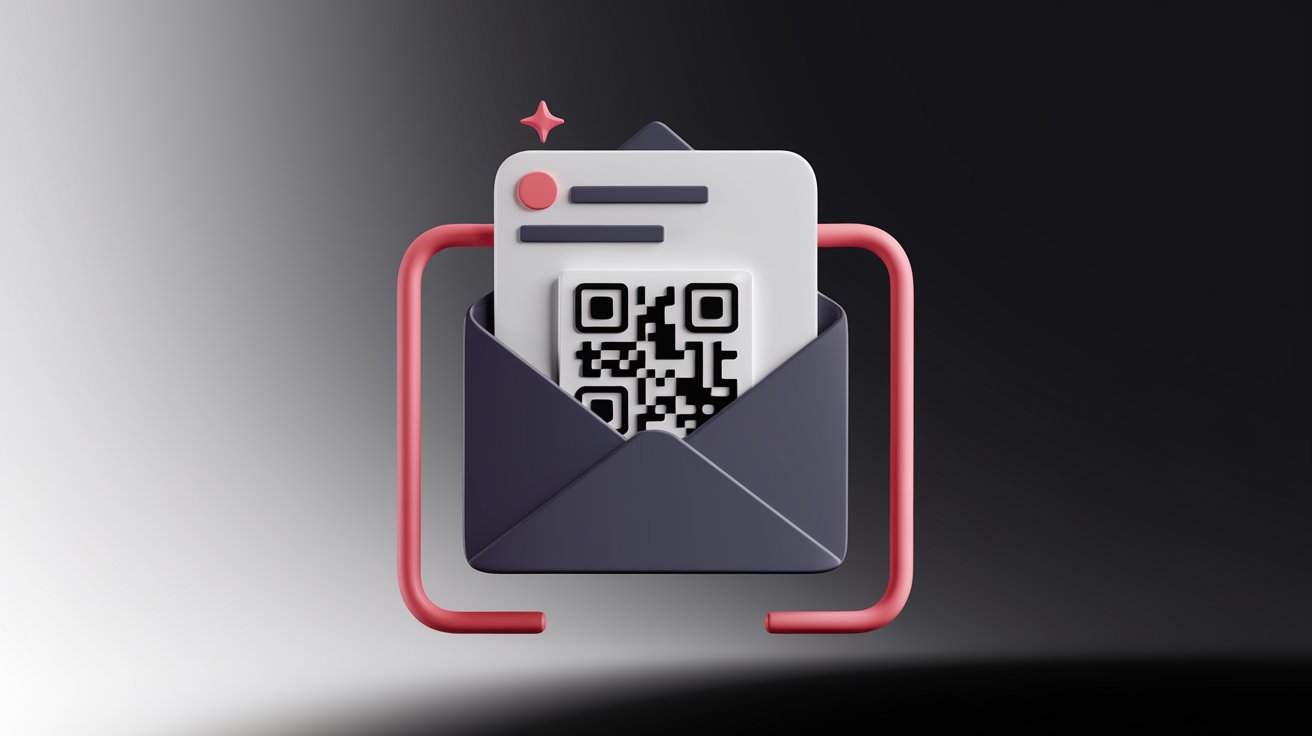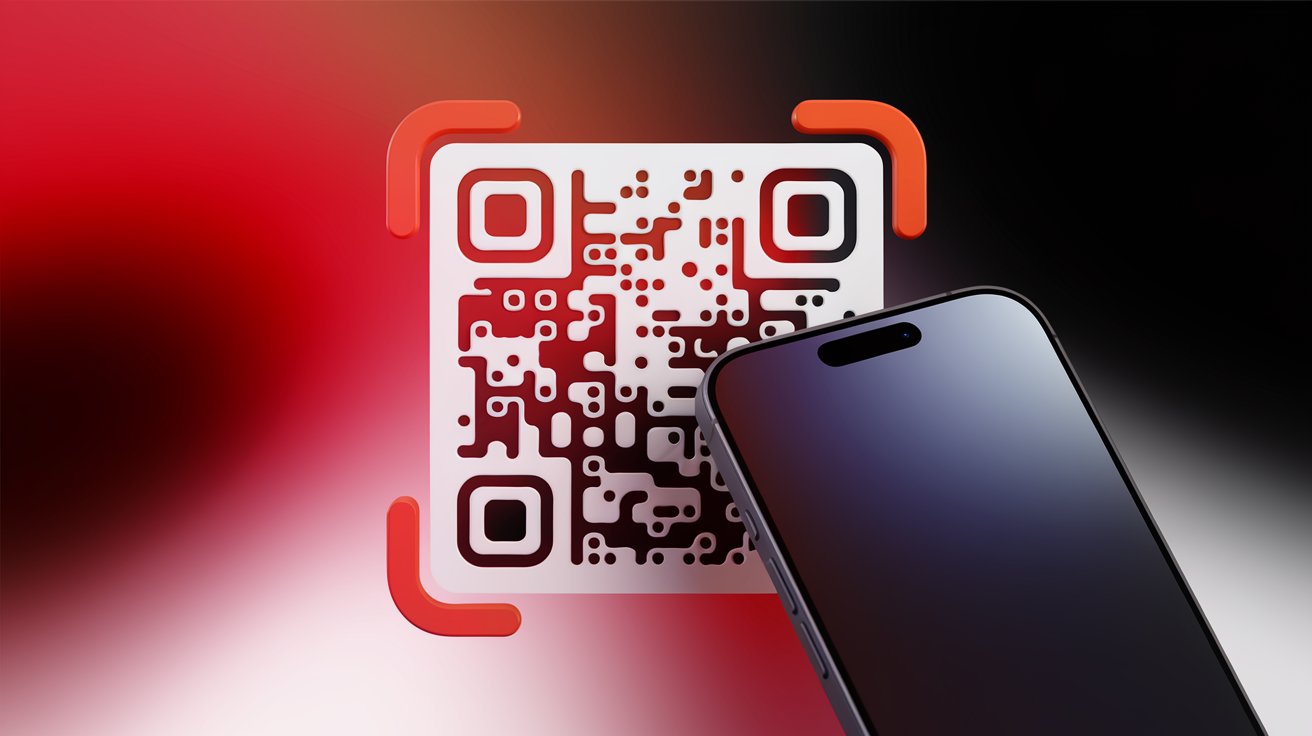What Is Quishing?
Quishing is a form of cyberattack that blends QR codes with phishing tactics.
It’s a deviously simple, very effective cyberattack that uses a QR code to trick you into visiting a malicious website. The goal is always the same: to steal your information. This could be your bank logins, company credentials, personal data, or even to install malware directly onto your device.
Unlike traditional phishing emails that include sketchy links, QR code phishing hides the danger behind a pixelated black-and-white image that feels harmless. But once scanned, the trap is sprung.
Why it matters now
QR codes are everywhere, pandemic supercharged their use – menus, parking meters, ads, delivery labels. They’re fast, convenient, and scan-ready. And that’s exactly why cybercriminals love them, as people trust QR codes without thinking. Scammers know this.
And many security systems aren’t built to analyze what’s behind a QR code. The moment you scan, it’s often too late.
Quishing = QR Code + Phishing
To really get how serious the threat of quishing is, you've got to see it in the same context as other common social engineering attacks. Each method targets a different communication channel and uses different tactics, but quishing's reliance on an image-based payload and a multi-device interaction model sets it apart.
Comparative Analysis: Quishing vs Other Social Engineering Attacks
As you can see, while the goal is often the same, the method of a quishing campaign is fundamentally different. It jumps from the digital world to the physical and back again, creating a blind spot for both users and traditional security.
The Quishing Kill Chain
To understand why QR code phishing attacks are so effective, we need to break down the kill chain – the sequence of steps from planning to execution.
- Malicious QR Code Generation: Attackers use online tools to create a QR code that encodes a malicious URL, often masked with link shorteners.
- Multi-Channel Distribution: The code is distributed via email, physical media like posters and stickers, or digital channels like social media.
- The Scan: The attack relies on the victim scanning the code, exploiting the widespread trust in QR technology. And many people scan a QR code without first inspecting the link.
- Redirection and Payload Delivery: After scanning, the user is redirected to a phishing website designed to harvest credentials, a site that initiates a malware download, or a fraudulent interactive voice response (IVR) system.
- Exploitation: The attacker uses the stolen information for financial theft, identity fraud, or to gain unauthorized access to corporate networks.
Why It’s More Dangerous Than It Sounds
It's a perfect storm of psychological trust and technical avoidance. You can't just hover your mouse over a physical QR code to check the URL like you can with a link in an email. It completely bypasses that critical security step. Also, most corporate email security systems are set up to look for dodgy links in text, but they often don't check images in emails for QR codes that could be harmful. Quishing exploits this exact blind spot. It uses our natural trust in technology as a tool, making convenience a weapon.
- No clickable link to scan for malware.
- No text for spam filters to analyze.
- No visible threat until the moment it’s too late.
Even experienced users are getting caught out by phishing attacks because QR codes can look legitimate. But when you dig a little deeper, you see that these are actually pretty targeted and well-funded operations.
Moreover, some QR code phishing attacks even include a CAPTCHA on the fake site to make it look more legitimate. Smart, right?
Real-World Quishing Examples
Quishing is happening across industries, cities, and devices.
Corporate and Enterprise Scams
- Microsoft 365 Credential Theft: This is the most common corporate quishing attack. Emails impersonating Microsoft or internal IT use urgent language to prompt users to scan a QR code, which leads to a fake login page that harvests credentials.
- Compromised Account Voicemail Scam: Attackers use a compromised employee account to send a "new voicemail" notification with a malicious QR code to colleagues, leveraging internal trust.
- Document Signing Scams: Emails impersonating services like DocuSign or Adobe trick users into scanning a QR code to sign a fake urgent document, leading to a credential-stealing site.
Public-Facing and Consumer Scams
- Parking Meter & Ticket Fraud: Police departments in major U.S. cities reported an explosion in fake QR code stickers placed on parking meters. Unsuspecting drivers scanned the code to “pay,” entered credit card details, and handed them over to cybercriminals.
- Restaurant Menu Scams: Fake QR code stickers on restaurant tables lead patrons to sites that install malware or steal payment information.
- Financial Services & Banking Scams: Emails impersonating banks use QR codes to lure customers to fake login portals to steal their credentials.
- The Public Wi-Fi Trap: You're at an airport or café. You see a sign on the table with a QR code to connect to the free guest Wi-Fi. Scanning it doesn't just connect you; it also prompts you to install a "network security profile" to use the internet. This profile is malware, designed to intercept all the data passing through your device.

Quishing Stats That Should Worry You
Quishing is a statistically significant and rapidly growing trend. Recent data shows a threat that's getting more common, advanced, and damaging.
The Rise of Quishing Attacks
- The number of quitting attacks went up by more than 400% from 2023 to 2024.
- Over 22% of phishing attempts now involve QR codes.
- Nearly 90% of qushing attacks are created to steal login credentials and other sensitive data.
Who’s Being Targeted And Why
- Employees in finance, HR, and procurement are prime targets due to their access to payment systems and sensitive documents.
- Small and medium-sized businesses are often targeted because they lack a robust cybersecurity infrastructure.
- Everyday users are baited using fake payment prompts, delivery updates, and Wi-Fi access codes.
Why? Everyone knows how to scan a QR code, but no one thinks twice.
Why Email Is Quishing’s Favorite Playground

Traditional email security systems were built for a different era of threats. They are simply not equipped to handle the unique nature of a quishing attack.
How Inboxes Are Exploited
An attacker doesn’t just send a QR code; they wrap it in a story. The email might claim to be from HR, IT support, or a trusted partner. This context lowers your guard. Your brain sees an official-looking email and a QR code for "MFA verification" and connects the dots, assuming it's a legitimate process. The inbox provides the perfect stage for this act of deception.
The Blind Spots in Traditional Email Security
Legacy email security systems focus on links, file hashes, and textual anomalies. But a QR code is just an image, and often compressed or distorted. That means:
- No URL to scan.
- No script to flag.
- No phishing language to analyze.
It’s security theater with the attacker slipping in through the side door.
Advanced Evasion Techniques – “Quishing 2.0”
Modern quishing attacks use:
Advanced Evasion Techniques Matrix
These tactics make QR code phishing attacks harder to trace, analyze, or predict.
Checklist: How to Protect Yourself from Quishing
Knowledge is your first shield. While no defense is foolproof, adopting a healthy dose of skepticism and practicing good security hygiene can dramatically reduce your risk of falling for a quishing attack.
Practical Steps to Avoid a Quishing Attack
- Think before you scan. Always ask: Where did this QR code come from? If it’s in an email, stop. Scan only if you trust the sender completely.
- Avoid scanning QR codes in emails and PDFs. Legitimate companies rarely ask you to scan codes via email.
- Never enter credentials after scanning a code. If a scanned QR sends you to a login page, close it. Open the site manually in your browser.
- Use preview tools. Some phones allow you to preview the link behind a QR code before opening it. Always check the URL carefully.
- Update your devices. Many quishing attacks exploit old OS or browser vulnerabilities.
- Avoid QR codes in public places without verifying. If a QR sticker looks slapped on or tampered with, skip it.
QR Code Security Hygiene
- Don’t trust blind scans. Just like you wouldn’t click on a suspicious link, don’t scan a QR code you didn’t request.
- Disable automatic link opening on your phone’s camera settings. Make scanning a two-step process.
- Educate your team and family. Anyone with an inbox is a target.
- Use mobile antivirus with QR protection. Some apps can scan the actual destination before you visit it.
- If it feels urgent or emotional, double-check. Quishing often uses fear or FOMO to push you into scanning.
The First Line of Defence: Choosing a Secure Email Service
Traditional email providers have become prime targets for the most sophisticated email scams. Why? Because attackers know that once they’re in your inbox, they’re just one step away from your identity, your money, or your business.
Big-name email services were never designed for this level of threat. They’re convenient, sure, but behind the scenes, they scan your messages, log your metadata, create your digital fingerprint, and rely on outdated spam filters to stop attacks that evolve faster than they can keep up.
It’s not enough to patch vulnerabilities after something goes wrong. Prevention starts with choosing a secure email service that’s built differently, from the ground up.
Why Atomic Mail?
At Atomic Mail, privacy isn’t an afterthought. It’s the foundation.
Here’s what sets us apart:
- End-to-end encryption by default: Your emails are encrypted from the moment you hit send. Only you and your recipient can read them – not us, not anyone.
- Zero-access architecture: We physically cannot read your inbox. Our systems are designed to keep your messages locked down, even from us.
- Anonymous sign-up: No phone number or personal data required. Stay private from day one.
- GDPR-compliant: We don’t track, sell, or mine your data. Your inbox belongs to you and only you.
- Alias management: Create email aliases on the fly. Use one address for banking, another for newsletters, and disable access instantly if something goes wrong.
- Seed phrase recovery: Lose your password? No problem. Restore access with your unique 12-word seed phrase, like a crypto wallet for your email.
Own Your Inbox. Own Your Privacy.
Start using Atomic Mail now — free, anonymous, encrypted.
🔐 Create Your Account



